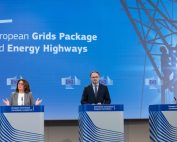Global Wind Energy Council (GWEC) and Global Wind Energy Council (GWEC) have released a roadmap for policymakers to chart a way out of the current energy crisis and climate change. The five-point plan, “Accelerating renewables to achieve energy security, affordability and climate action”, addresses the need to restore order to energy markets while meeting climate goals and creating a secure, stable energy transition.
The plan was published against the backdrop of record temperatures and global economic risks caused by crises. A heat wave has killed thousands in Spain and Portugal, while drought and severe fires have ravaged France, Italy, Greece, Croatia, Turkey and Morocco this year. Britain and the United States are experiencing historically high temperatures, India has experienced a series of heat waves in recent months, and China has recorded its hottest June this year. Meanwhile, the energy crisis has contributed to an economic crisis, massive social unrest and political instability in Sri Lanka.
These events are interrelated and are symptomatic of a disorderly, unstable energy transition. They emphasize the need for urgent action to accelerate the deployment of renewable energy, mitigate the consequences for the economy, lower energy costs and lead to zero net emissions. The amount of wind power capacity can be rapidly increased in the next few years to offer solutions to stabilize energy prices, increase energy security and independence from fossil fuels, while building a secure energy transition in the medium to long term.
“Policymakers must make sound decisions that prioritize the energy transition and are sensitive to the social, economic, environmental and national risks associated with prolonged dependence on fossil fuels. These five steps can support a systemic transformation that will benefit society as a whole”, said Ben Backwell, CEO of GWEC.
He adds: “The world is facing twin crises of energy security and affordability on the one hand and the threat of accelerating global warming on the other. We need to make a decisive shift away from fossil fuels rather than prolonging dependence on them”.
“The solution must be based on renewable energy sources that can provide citizens and businesses with clean and reliable electricity using the unlimited indigenous resources of wind and solar. Rapidly expanding wind energy can also bring huge social benefits, from additional jobs and inward investment to cleaner air and greater water security”.
“We are witnessing a divergence between politics and the market when it comes to implementing the energy transition, solving energy problems and ensuring ecological recovery in the wake of the COVID-19 pandemic”.
“The five steps in this plan will help alleviate some of the bottlenecks in renewable energy deployment caused by a lack of political will, overly long permitting regimes, or the prioritization of incumbent, polluting fossil fuels. Aligning policies with the recommendations can support governments in achieving an orderly transition and escaping the dangers of relying on fossil fuels”.
5-point plan
With the five measures, governments can provide massive amounts of green energy to increase energy security and mitigate the climate crisis, while avoiding decisions that perpetuate dependence on fossil fuels and risk worse crises in the future.
- Urgently improving permitting to bring about a huge increase in wind power capacity in the next 1-3 years and building a plan for projects in line with the “net zero” principle.
- Implementing a grid access action plan to connect large amounts of renewable energy.
- Introducing simplified procurement and pricing mechanisms for clean energy to quickly unlock investments.
- Avoiding large-scale investments in fossil fuel-based production.
- Commiting to developing robust energy transition plans and milestones to enable the renewables industry to plan for supply chain development.
Source and details of the plan: GWEC















